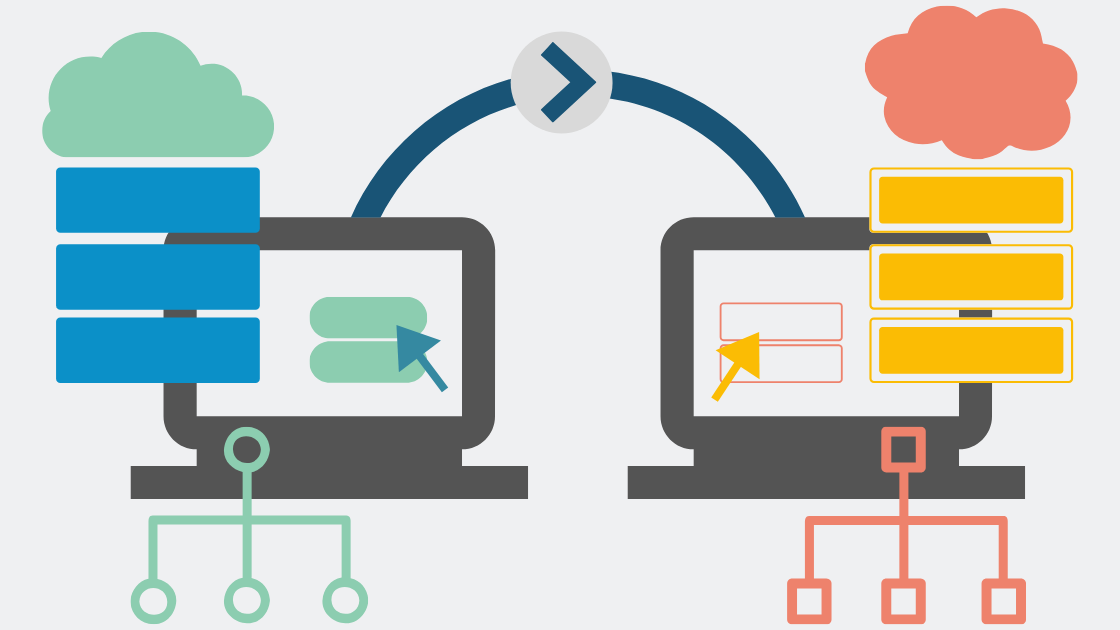What is site migration?
A site migration is a process of creating a considerable change to a website that affects the website’s setup and/or technology. While websites require continual maintenance and updates, a site migration characterizes a substantial change that impacts the overall performance and operations of the website, as discussed in the next section.
Common reasons for a site migration

A site migration is a large project that requires a strategic migration process to ensure a successful change. While each project is unique, there are 5 common reasons that would prompt a site migration.
1. Changing CMS
Operating a website on an out-dated or insufficient content management system (CMS) can cause many problems for both the business and the user experience. By researching and understanding the benefits of different CMSs, for example WordPress, you can determine which platform is best for your business and begin your website content migration plan.
2. Changing web host
Similar to your CMS, an inadequate website hosting service can hinder the capacities of your website, such as limited bandwidth or lack of personal control. A new web host can provide improved services that will benefit your website’s performance in the long run.
3. Changing to more website security
A secure website greatly impacts the user’s trust in your business. When a website is secure, meaning it is secure sockets layer (SSL) certified, the URL will begin with HTTPS as compared to an insecure website beginning with HTTP. This indicates that your website is equipped with the necessary protocols to safeguard the user’s private information such as credit card numbers or login credentials. Furthermore, Google favors secure websites, therefore, increasing their search ranking.
4. Changing site structure and design
Changing the overall design, structure, or interaction of your website can be a reason for site migration. Altering the website’s design including UX and UI can increase the user’s experience leading to more website interaction and conversions. In addition, modifying how the website’s information is structured, called information architecture (IA), can improve the actions the user takes on the site, therefore guiding beneficial activity. Another component is designing a website to be mobile optimized to compensate for the increased use of mobile devices and ranking prioritization.
5. Changing the domain name
Whether your business is rebranding or absorbing another website, changing your domain is a considerable decision that requires a migration process. Yet the need for a new domain name can open favorable outcomes in the future.
Common site migration issues

Since a site migration incorporates changing the website on such a large and extensive scale, the migration process needs to be carefully planned and executed to ensure the website continues to run properly. If the migration process is not executed correctly, it runs the risk of causing potential issues such as ineffective redirects, existing orphaned pages, decreased traffic, and live noindex metatags.
1. Lack of redirects
Setting up redirects is an essential step of the migration process to ensure every page of the old website is accurately directed to the new website, especially when the URLs change. If you don’t set up redirects, for example, a 301 redirect for old web pages that have equivalent pages on the new site, you run the risk of the user encountering a broken 404 page and exiting the site.
A 404 page is a standard page that users are directed to for URLs that do not exist or are no longer available. They can also be displayed as HTTP 404, 404 Not Found, Page Not Found, or Server Not Found.
To avoid a 404 showing up for a page that does not exist on the new website but was available on the old website, you would set up a redirect to the homepage. For example, on your old site you had a page for “Careers” that had the URL “/careers/” but on the new site, you do not offer a careers page. You would want to set up a redirect for “/careers/” that directs to the homepage (instead of a 404 broken page).
In comparison, a standard 301 redirect is a permanent redirect that automatically navigates a user trying to access an old URL to a predetermined URL on your new website.
For example, if you have a page for “Work” and the URL for the old site was “/our-work/” but the URL on the new site is just “/work/”, you would want to do a 301 redirect from “/our-work/” to “/work/”.
2. Existence of orphaned pages
Since the migration process often requires changing URLs, thus altering the internal structure of website pages, it runs the risk of causing orphaned pages. Orphaned pages are URLs that cannot be found or accessed because they are not internally linked. This also means they cannot be located by Google bots and therefore lack any traffic.
While some pages are designed in this manner, for example old event landing pages, neglecting to ensure pages are accessible will prevent any web traffic from getting to them. In order to locate orphaned pages, you must run a website crawl to audit your website and identify these gaps.
3. Not removing noindex metatag
A noindex metatag is a tag that you add to a webpage in order to tell web crawlers that while the page exists, it cannot be added to the search results. While developing the new website, the noindex metatags are used to guarantee that users are not directed to the new website before it goes live. In return, forgetting to remove the noindex metatags will cause the webpages to not appear in search results therefore significantly hindering the website’s visibility. By implementing a set quality assurance (QA) process you should be able to check for errors such as a noindex metatag before the migration launch.
4. Decreased website traffic
All these points contribute to the overall risk of losing traffic to the new site. If a redirect is not properly enabled, a page is orphaned, or noindex metatag is not removed, they all lead to a decrease in website traffic. By outlining and following a comprehensive migration process with specific checklists, your website traffic will effectively transfer from the old site to the newly migrated site.
While a site migration is a substantial project, the reason for the migration, whether it be rebranding or a structural change, provides the opportunity to improve additional aspects of your website such as keyword optimization or SSL authentication. Therefore, these changes adhere to an overall superior website, leading to increased traffic.






